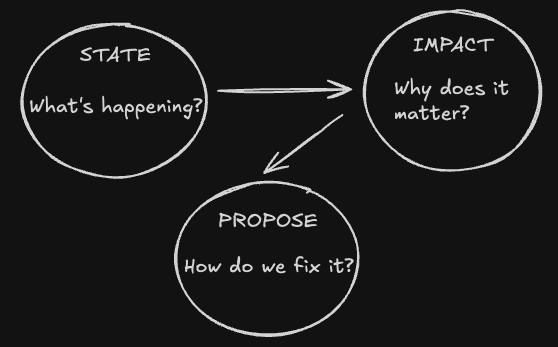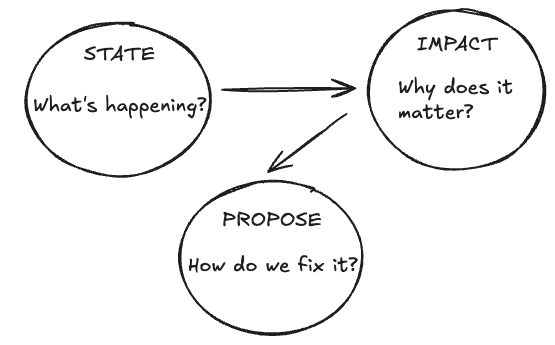SIP it Fast™
A Practical Approach to Clear Communication for Engineers
Communicating Clearly in a Fast-Paced World
As engineers, we juggle complex ideas, fast-moving projects, and deep technical challenges. But when it comes to communication, clarity is key—especially in performance, system design, and debugging discussions.
I started using SIP it Fast™ as a way to improve my own communication, and I’ve found it incredibly helpful for structuring technical updates in a way that keeps discussions focused and productive. By breaking down issues into State, Impact, and Propose, I’ve been able to make my messages clearer, reduce unnecessary back-and-forth, and ensure that discussions stay action-oriented.
But this isn’t about rushing conversations—it’s about making sure we communicate with clarity and impact. I’m still refining this approach, and I’d love to hear how others handle technical communication.
What is SIP it Fast™?
A straightforward three-step approach to structured communication:
🔴 State the root cause – What’s happening?
🟡 Impact explanation – Why does it matter?
🟢 Propose a solution – How do we fix it?
Why Use It?
✅ Helps keep messages clear and direct
✅ Ensures everyone understands the impact of an issue
✅ Encourages solution-focused discussions
SIP it Fast™ in Action
Example 1: Cache Not Invalidating on Updates
❌ Before (Too Much Detail)
- I was debugging a caching issue where users were seeing outdated product data. I found that updates aren’t triggering cache invalidation, which means the cache is serving old information. We might need a better strategy to clear the cache when products change.
✅ After (SIP it Fast™)
- [State] Cache isn’t invalidating when products are updated. [Impact] Users see outdated product info, leading to potential order mistakes. [Propose] Implementing a write-through cache will ensure updates reflect instantly.
👉 Want to learn more about caching? Check out Unlocking Cache
Example 2: Slow Query Performance
❌ Before (Unstructured Explanation)
- We’re seeing slow performance on the order history page. After looking into the database queries, I found that they’re scanning the entire orders table instead of using an index. This is likely because there’s no index on the customer_id column, which is frequently used in WHERE conditions. We should consider adding an index to optimize query execution.
✅ After (SIP it Fast™)
- [State] Queries on the order history page are slow due to full table scans. [Impact] This increases response times as the database scans millions of records instead of fetching data efficiently. [Propose] Adding an index on customer_id in the orders table will optimize query performance and reduce load.
Summary
The SIP it Fast™ approach provides a structured way to communicate technical issues, but it’s not a static formula. Each scenario may require refinement based on context, audience, and complexity.
Trademark Disclaimer
SIP it Fast™ is a term I coined to describe a structured approach to technical communication. Before sharing this, I searched for existing trademarks and did not find one. However, if this term is already trademarked or in prior use, I will gladly acknowledge it and update this blog accordingly. Please feel free to reach out if you have any relevant information. Thanks!

